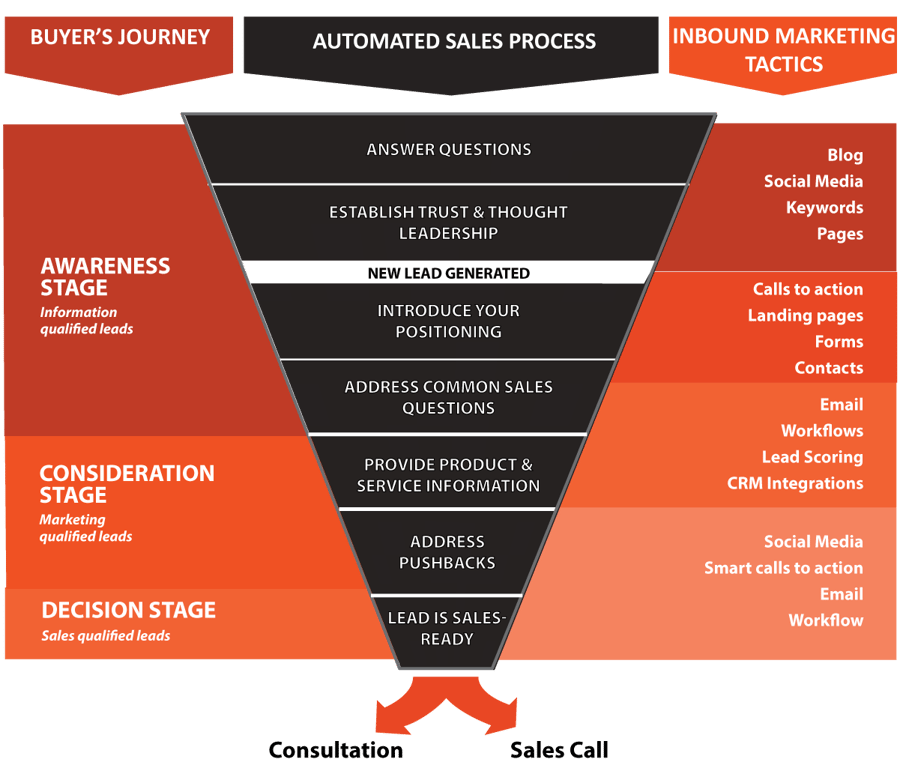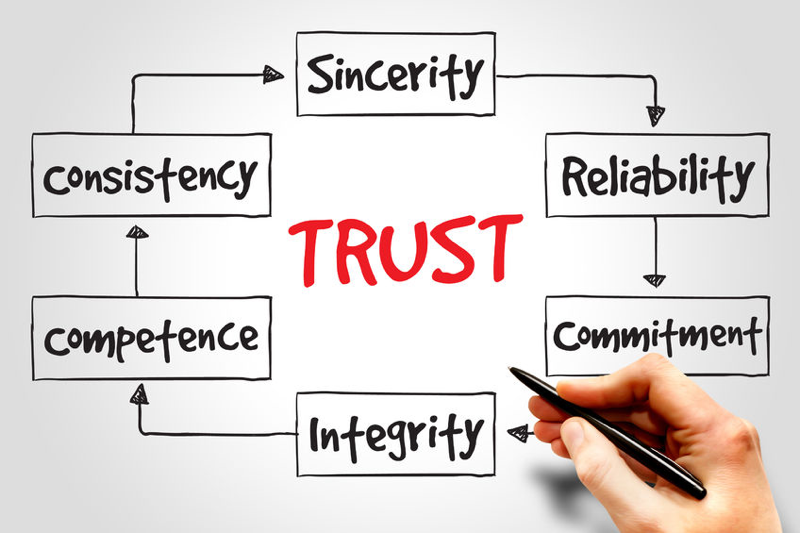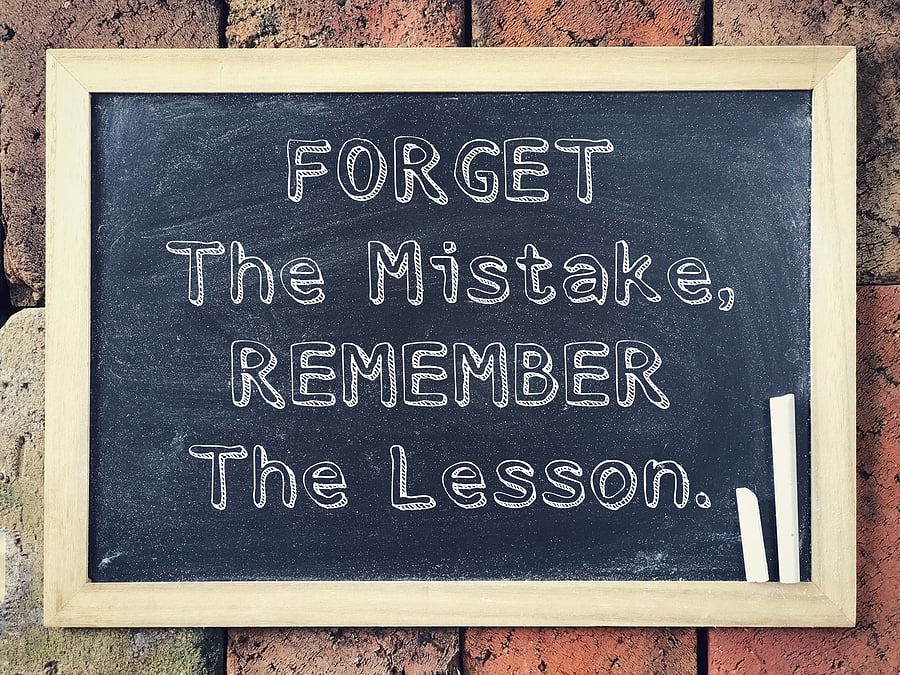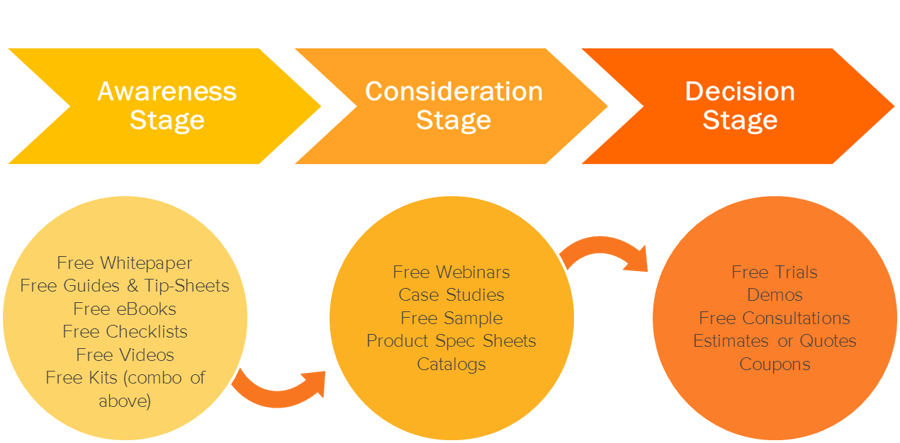Topic:
Lead Generation
Any content marketing plan requires many elements to be effective at attracting prospects, converting them into leads, and nurturing them until they request a discussion with a salesperson. A content strategy is an essential foundation for your digital marketing plan and is where every business should begin before investing in improving their online presence.
A content strategy is a specification of all the content you create for your digital marketing - ebooks (or other lead magnets), social media posts, blog articles, videos, web page content, email communications, and any other written or visual media.
 Content creation is an essential part of inbound marketing for a few reasons. It's an excellent opportunity to build credibility, show off your voice, and reinforce your brand position. Creating and publishing valuable content helps visitors remember your business and what you have to say about how your company solves problems of interest to your ideal customer. When you create content, it should reflect your business's unique personality, while showing your audience what sets you apart.
Content creation is an essential part of inbound marketing for a few reasons. It's an excellent opportunity to build credibility, show off your voice, and reinforce your brand position. Creating and publishing valuable content helps visitors remember your business and what you have to say about how your company solves problems of interest to your ideal customer. When you create content, it should reflect your business's unique personality, while showing your audience what sets you apart.
The content you create that is defined in your strategy also gives you the chance to demonstrate your industry expertise. Much of the content you create will educate your audience and help them solve the critical problems they have or answer their questions. This approach to sharing educational content lets people see that you know what you're talking about, and they can trust what you have to say.
The goal of a content strategy is to define different types of content with the central purpose of attracting and converting more leads who represent your ideal customer, enabling you to grow your business. When done correctly, it creates a reliable stream of new leads and a way to ensure your website traffic increases with the right audience. Over time, you can experiment with different types of content to determine which topics resonate best.
There are many content types you can use in your content strategy, and the kind you use depends on whom you're trying to reach, what you're trying to say, and which stage of the buyer's journey the information satisfies.
Blog posts are the bread and butter of any effective content strategy. They are the best way to share ideas and information that will attract new visitors to your website. The content you share in blog posts should be valuable and educational and should aim to answer any questions your audience may have about your industry. Blogs have the added benefit of providing a nearly endless supply of topics to build search engine rank around.
Video is an excellent medium for concepts that are hard to explain in words. Product demonstrations, conceptual ideas, and visual statistics can all help bring your brand to life. Indeed, video is much more engaging than written content and often takes more time and resources to create.
Creating an eBook is perfect for writing about a topic in-depth. eBooks are also a significant lead-generating tool. You can offer them to visitors who want to learn more by submitting a lead form with their contact information to receive the material. They serve as lead magnets for business. Lead magnets are a vital part of any successful online marketing program.
Infographics can help your audience visualize statistics and facts by breaking down the information into bite-sized annotated images to tell a story.
Social media is used in every market, targeting virtually any prospect. If you don't have a presence on social media platforms, you miss out on an opportunity to spread your message and reinforce your brand. Social media is a great place to disseminate the content you create and get it out in front of the right people. Your potential customers spend time browsing and engaging with social media, so meet them on a platform they're already using.

A trigger is any problem your ideal customer faces that is important enough to make them invest in a solution right now. The connected goal is often simply the inverse of the trigger - for example, if your prospect's trigger is a decrease in website visitors, their goal will be to increase traffic to their website. Each set of triggers and goals presents you with an enormous opportunity for conversion. You want to put content in front of your prospects that will reach them when they are triggered to seek out relevant information and demonstrate how your company is uniquely qualified to help them reach their goals. Long-form content in eBooks is a great way to speak directly to your prospects' problems and provide detailed, high-value solutions that show your expertise. By taking this sales-focused approach to content strategy, you can build trust with your prospects and establish thought leadership in your industry, instead of creating less focused content that ultimately is not as targeted to the ideal buyer’s needs
In searching for solutions to their problems, most people will type a question directly into Google, Bing, or Yahoo and explore related questions until they find exactly what they're looking for. Search questions are usually general and industry-based to give the user the background information they need to make an informed buying decision. Your goal is to create content that will not only answer those questions, but rank for them in a Google search. For example, if your ideal customer is learning how to increase traffic to their website, you should have blog posts available to answer questions about website traffic and SEO. Include keywords in your blog titles, headings, and meta descriptions to improve your rank and increase your chances of getting discovered online.
Your sales team is likely faced with some recurring questions and pushbacks that must be answered before your prospect will be ready to buy. Unlike search questions, which can be broad, these are usually specific to your company's brand, products, or services -- like a question about a feature or a pushback on pricing. Instead of responding to each of these issues individually, you can scale your sales process by building an automated email nurturing system around each piece of content that will give leads more information about your brand while saving time for your sales team. These nurturing emails should effectively mirror the sales process and address the common questions and pushbacks you receive through the delivery of targeted content.

Put into practice, content marketing offers huge benefits that can truly transform your business. Let’s dig into some of the benefits now.
More content = more chances to be seen. With more content, you’ll naturally be able to cover a greater number of keywords and topics relevant to your business. This translates into more opportunities for you to rank in search results for a variety of related search terms.
In fact, research from HubSpot found that companies that published 16+ blog posts per month got nearly 3.5x more traffic than companies that published posts four times a month or less. It really depends on your company and market and the status of your current website performance when setting your company’s specific blogging frequency. Generally speaking, newer websites and businesses should blog more frequently while established businesses and websites can take a more prescriptive approach. Regardless of the frequency, dDon’t miss out on this opportunity to steadily grow an audience through your content.
You know that you’re an expert in your industry. Content marketing is your opportunity to prove that to your audience. Authoritative content positions you as a leader. It makes customers confident that you know what you’re doing, and more importantly, that you won’t steer them in the wrong direction—and waste their dollars in the process. If you think you’re a match, simply respond to the inquiry, and you just may land yourself an interview with a local, regional, or even national media outlet. If you’re able to score one, it’s a great way to prove that you know what you’re talking about—and possibly gain a new audience while you’re at it.
Great content marketing begins with a profound understanding of your audience. When you connect deeply with their questions, pain points, and objections through your content, you demonstrate that you’re someone they can turn to when they need help. With that foundation of trust, your audience will be primed to learn more about your business’s products or services. To identify your target audience, you should create a buyer persona, if you haven’t completed one already.
Explaining your business’s strengths, benefits, and differentiators through content marketing helps teach customers exactly why they should look to you for a solution to their problems, versus other businesses with another approach. It’s also important to note that, in today’s world, the customer is in the driver’s seat of this process—no longer can a business simply blast their messages through old-school methods such as TV, newspaper, and radio ads and expect to achieve optimal results. A good B2B content marketing strategy ensures that this education takes place when, and how, the customer wants it.
According to HubSpot, one in 10 blog posts are compounding, meaning organic search increases their traffic over time. And this effect can last for years. In an environment where the lifespan of an average social media post may only be a few days or even a few hours, an upfront investment in creating content with a long shelf-life should be a compelling strategy for your business. This effect won’t happen with every single post you write—but the more quality content you produce, the more opportunities you’ll have to achieve this type of traffic.
Once you’ve already earned your audience’s trust through your content, you’ll be well-positioned to implement a lead generation strategy by asking for their contact information in return for valuable new content, such as an ebook, case study, or other helpful resources.
All effective content marketing strategy examples not only can increase the number of leads you receive, but they also can help ensure that the leads are the most qualified to buy your products or services. Content marketing ensures that your customers get to know you on their terms—which is exactly how they want the process to be. Generating traffic and leads were defined as most company's top challenges based on the state of inbound report.

You write blog posts when the whim strikes you … or when you have time, which is not all that often. So one month you might write six posts, then nothing for a few weeks. This inconsistent content schedule is not only costing you potential readers, but it's also probably making your content quality suffer.
The solution? Be consistent! It's as easy as that. If your schedule doesn't allow for you to write content several times a week, block off a few hours each month and write like crazy, then schedule your posts in advance. This tactic ensures you always have a queue of content. You also can hire experienced freelancers or a marketing agency to help. Professionals such as these can be especially beneficial, as they have expertise in many other facets of content marketing, such as SEO, that can amplify the results of your content efforts.
Well-crafted blog posts are a wonderful tool, but not everyone likes to learn by consuming the written word. Some people prefer podcasts, infographics, videos, or other forms of content—and you’ll want to make sure they can find your content in the places they are hanging out. By ignoring content options such as these, you're limiting who you will attract.
The remedy is to create a content calendar so you can see at a glance what kinds of content and topics you're covering. Again, consistency works here. You can plan to publish a written post on Mondays, a video interview on Wednesdays, and a podcast on Fridays. Whatever works to mix it up.
In addition, your existing content can offer opportunities to be repurposed in other formats. Revisit content you’ve already published to see what you may be able to refresh in new ways—for example, a post with lots of great images and graphics might lend itself well to a short social media video.
What's your most popular blog post? Don't know? Then you're guilty of this mistake. You're writing content for a very specific audience, and if you don't know which posts resonate with them, how can you continue to create content they'll like?
It doesn't take lots of money or complex research to glean what your audience wants. Get started by reviewing your own data in Google Analytics, HubSpot, and social media platforms to see which posts are getting the most visits, interactions, shares, and conversions. Then write more content in the same vein.
Then, move on to additional tools, both free and paid, that you can use to explore what topics are trending and of most interest to web users. You also can ask your audience directly about what content they want to see—for example, you can pose questions on social media, or contact your email subscribers with a survey.

For some marketers, old habits die hard and they make the mistake of creating content that is not much more than a thinly-veiled sales pitch. What they may not realize is that up to 80 percent of organic search is informational. In other words, searchers are looking for expert advice to help with a specific problem or question. The best way, then, to attract eyeballs is to align your marketing and sales efforts and provide solid, reliable information that answers potential customers’ questions at the various stages of the sales process.
That doesn’t mean your content has to read like a technical paper. In fact, prospects will hang around your website longer and take more time to read your content if you make it easy to read and even inject a little humor into it. Remember, you’re trying to educate and entertain your target audience so they download and share more of your content more often.
Marketing and sales teams are often divided by a chasm of cross-purposes. In many organizations, marketing gets accused of creating campaigns that are ineffective at delivering qualified leads, while sales gets accused of being unable to close all the “quality” leads marketing delivers.
Content marketing and the strategies that make it work give you an opportunity to get everyone on the same page. The key is knowing the difference between creating content to help marketing attract qualified leads and content that can help sales turn prospects into customers.
Marketing content should be designed to initially attract prospects at the beginning of their search for a solution to their specific challenge. This might be as basic as brand awareness pieces to create better visibility in the marketplace for your company and its offerings. This content must then be leveraged in every channel your ideal prospects utilize to ensure you reach them effectively. Whatever channels you use, the content you put on them must create the kind of favorable awareness you need to make the shortlist for prospects’ consideration.
Sales content should engage the prospect once they enter the sales funnel. That means the content needs to provide progressively focused information that answers increasingly specific questions posed by prospects at each step of the sales journey.
Now that you've learned how to create a content marketing strategy, it's time to put it into action. To do that effectively, you're going to need to understand how your sales process works. Let’s look at this content strategy framework in the context of the inbound marketing funnel.

The triggers and goals above define the eBooks that establish thought leadership and introduce your positioning. The questions and answers define the blog topics. When publishing blogs, we take care to offer an eBook or other detailed lead magnet to enable the conversion of visitors into contacts in your database. The nurturing emails answer common questions your sales reps might get early in the sales process when the prospect is seeking information.
We typically develop an eBook or guide which is branded. It speaks about how your business addresses problems and establishes trust with fact-based descriptions about how your business has helped others. This eBook or Guide is called a brand filter because if the prospect downloads this content, they are clearly researching your company. We follow downloads of this content with nurturing emails that address objection handling questions, like your sales rep might if they had direct contact with the prospect.
We develop landing pages that describe value-added offers that describe ways your company delivers value during an initial discussion. Your sales reps, if they are consultative selling, will always help a prospect discover something about their problem or solution they may not have been aware of. In this way, these engagements are created from the perspective of the prospect, not your company. By doing this, the conversion rate of visitors into sales-ready leads is at its highest.
Modern marketing and sales require a significant investment in creating high-quality content, sharing it digitally, and engaging prospects and visitors in ways they prefer. But quality content offers even more value – it’s also an investment in positive brand-building. Improved organic ranking of content on your website keeps a fresh flow of new visitors to your site and contacts for your marketing pipeline.
If you're ready to get going on creating your content strategy today, contact us for more information or request a content strategy project for your business to supercharge your inbound marketing results. Want to learn how content contributes to attracting leads to your business? Download the eBook "The Nine Steps to Attract Qualified Leads to Your Business."
Bristol Strategy is a full-funnel inbound marketing agency and inbound sales agency offering the full complement of Inbound Marketing services that enable our clients to surpass their business objectives by transforming the way they engage with their buyers online. Reach out to us to learn more about how our experience and capabilities can help your business grow.
Ask us about our unique approach that creates a full-funnel "inbound" engagement model for your business that attracts and converts digitally engaged prospects.